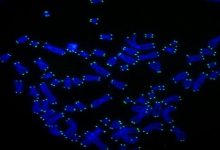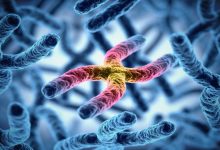
Mitochondria, the powerhouse of the cell can be involved in reducing the cancer invasiveness and resistance to radiotherapy, suggests a new study conducted by a team of researchers at Hokkaido University.
What the Research is:
Mitochondria are known to relocate within the cellular cytoplasm when different types of cells move. For example, they gather at the tail end of white blood cells while moving towards a foreign invader, and at the leading edge of invading cancer cells. The mechanisms lying behind these movements, however, are still not fully understood.
The scientists studied the molecules involved in the movement of mitochondria and they were able to identify a pathway that ultimately leads to movement of mitochondria towards the cell’s periphery, increasing cancer invasiveness. Further, when they blocked this pathway, the mitochondria aggregated within the cell’s center and they started overproducing and leaking Reactive Oxygen Species (ROS). Reactive Oxygen Species are unstable oxygen-containing molecules, which are known to enhance cancer invasiveness, but when produced in excess amount can result in cancer cell death.
How The Study Was Conducted:
In the study published in Nature Communications, the team tagged a variety of molecules inside invasive breast cancer cells with fluorescent compounds to follow the mitochondrial movements and ROS production. They then blocked key molecules that are involved in invasiveness.
During the research, it was found that Integrin, a principal protein receptor used by animal cells to bind to the extracellular matrix also determined the movement of mitochondria inside the cell. They found that a molecular pathway which facilitates the recycling of integrin within the cell, called Arf6-AMP1-PRKD2, also facilitates the localization of mitochondria.
Integrin accumulation leads to the formation of an adhesion complex at the cell membrane, which ultimately induces trafficking of mitochondria to the cell periphery. Disrupting this pathway led to the aggregation of mitochondria near the cell centre, reducing cancer cell invasiveness. During the experiment, the team also directly modified the mitochondrial distribution, finding that mitochondrial aggregation by itself leads to the production of excessive ROS, resulting in cancer cell death.
Future Prospects:
There are treatments available like ionizing radiation to increase the production of ROS within cancer cells, contributing to their anti-cancer effects. But some cancer cells develop a tolerance to ROS that allows them to handle more of ROS easily.
According to the researchers involved in the study, their findings indicate “a novel molecular link between cell movements and mitochondrial dynamics, which appears to be crucial for both the invasive activity and tolerance to reactive oxygen species of highly invasive cancers. Our findings may also lead to novel strategies to improve the efficacy of reactive oxygen species-mediated cancer therapies, such as ionizing radiation.”






